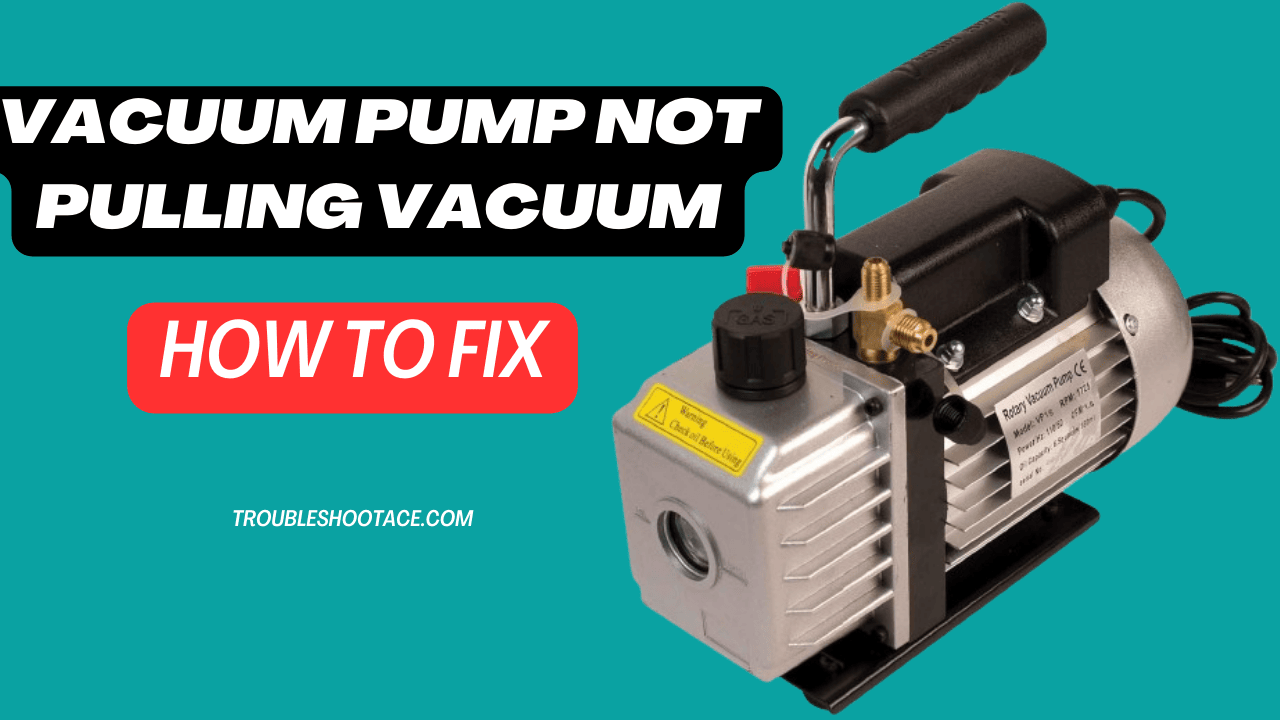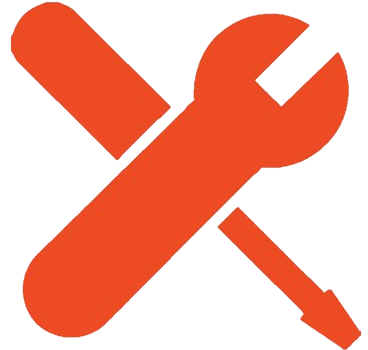The most common causes of a vacuum pump not pulling a vacuum include leaks, damaged seals, low oil levels, and clogged filters. Inspect for leaks, change seals as necessary, add more oil, clean or replace the filter, and ensure nothing obstructs the flow of oil. If the problem continues, there can be a mechanical issue that needs to be fixed by an expert.

Common Reasons for Vacuum Pump Failures
- Contamination
- Leaks
- Oil Issues
- Mechanical Problems
Contamination
The vacuum pump may get clogged with dust and debris, lowering its efficiency.
To avoid contamination problems, routine maintenance and cleaning are necessary.
Leaks
The tubing, connectors, or seals of the pump may all experience vacuum leakage.
Look for obvious leaks and locate the issue’s source with a leak detector.
Oil Issues
A polluted or insufficient oil supply can affect the vacuum pump’s functionality.
Regularly check the level of the oil and replace it as recommended by the manufacturer.
Mechanical Problems
Wear and tear on the pump’s components can cause mechanical failures.
Regular inspections and servicing can help prevent mechanical issues.
ALSO READ: Why Vacuum Pressure Is Negative | Complete Guide
Vacuum Pump Not Pulling Vacuum: Troubleshooting and Solutions
A vacuum pump is a device used to remove air and all its possibilities from many scientific and industrial processes by creating a vacuum. If a vacuum pump isn’t evacuating as it should, the matter is quite an annoying one, and can also get one behind his schedule.
1. Check for Leaks
Leaks in the differentials cause the vacuum pump not to pull a vacuum. Some, even the tiniest of leaks, could badly bring about the efficiency of their use. In checking if there is a leak, a vacuum gauge is used with a system that is depressed as slowly as possible, then the gauge is watched. If the vacuum level does not hold, a leak is probable.
2. Inspect and Replace Seals
The good part forming keeping the vacuum in the system. The seals could either wear off or get damaged with time, hence losing their sealing property. Visually inspect the seal and all probable connections on the pump. Replace any failed seal.
3. Check the Oil Level
Most of the modern designs of a vacuum pump require oil for a state-of-the-art performance level. Its capacity to pull a vacuum will also be affected if there is less, or contrariwise, even too much oil. Check the oil level within the pump and refill it with oil to its appropriate level, according to the manufacturer’s recommendation.
4. Clean or Replace the Filter
An otherwise clean but obstructed filter will tend to reduce airflow in maintaining the vacuum by the held-in pump and, hence inefficient. Check the filter in the vacuum pump featured. A clean filter is the best way to get proper airflow and ensures the pump draws a vacuum effectively.
5. Check for Obstructions
Sometimes it can just be a simple obstruction within the system. Take your time and just check lightly through the hoses, see maybe if the valves, etc., have obstructions that won’t let it pull a vacuum. Take them out and retest the system.
6. Inspect the Pump for Mechanical Issues
A pump mechanical problem could explain the situation if none of the above seems to be at fault. Check for worn and damaged parts of the pump by doing a replacement of the workout and broken parts. Contact a professional technician or the manufacturer after all the above has been done.
How do I know if my vacuum pump is working properly?
To determine if your vacuum pump is functioning correctly, you can follow these steps:
- Disconnect the Pump: First, disconnect the vacuum pump from the system or application it’s connected to.
- Close Inlet and Gas Ballast: Close the inlet valve of the vacuum pump. If your pump has a gas ballast, close it as well.
- Switch On the Vacuum Pump: Turn on the vacuum pump.
- Check the Outlet: Place your hand near the outlet of the vacuum pump. Determine if you can feel a significant gas flow coming out. If there is no significant gas flow, it indicates that the vacuum pump is functioning properly.
However, if you feel a significant gas flow, there may be issues with the pump.
Further Investigation:
If you detect significant gas flow, consider the following:
Leaks: Inspect the application and connections for possible leaks.
Wear Parts: If necessary, replace the worn parts of the diaphragm pump.
Precision Testing (Optional):
For a more precise vacuum test, use an appropriate measuring device:
Diaphragm Pumps: Consider using the DVR2 pro for diaphragm pumps.
Rotary Vane Pumps: Use the VACUU·VIEW extended.
What is the best oil for vacuum pumps?
When it comes to selecting the best oil for vacuum pumps, it’s essential to consider the specific type of pump and its intended application. Different oils have varying properties, and choosing the right one ensures optimal performance. Let’s explore some common vacuum pump oils:
Single-Distilled Oil:
Used for: Single-stage oil-sealed rotary vane pumps.
Ultimate Vacuum: Around 10 microns
Characteristics: Light brown color after distillation, reduced sulfur content
Double-Distilled Oil:
Used for: Most two-stage vacuum pumps.
Ultimate Vacuum: Approximately 1 micron
Triple-Distilled Oil:
Used for: High-performance applications.
Ultimate Vacuum: Achieves an impressive 0.6 microns
Characteristics: Transparent, devoid of sulfur or impurities.
Hydrotreated Oil:
Used for: Industrial and scientific high-vacuum applications.
Characteristics: Inert, highly pure, and clear in color.
Remember that the choice of oil depends on your specific vacuum pump type, operating conditions, and desired vacuum level. Always refer to the manufacturer’s recommendations and guidelines for the best results.
Conclusion
Ensuring that your vacuum pump is pulling the vacuum correctly is essential for maintaining efficient operations in your workspace. By addressing common issues such as contamination, leaks, oil problems, and mechanical failures, you can troubleshoot and resolve any problems with your vacuum pump. Remember to follow the recommended maintenance practices to prolong the lifespan of your vacuum pump and optimize its performance.

